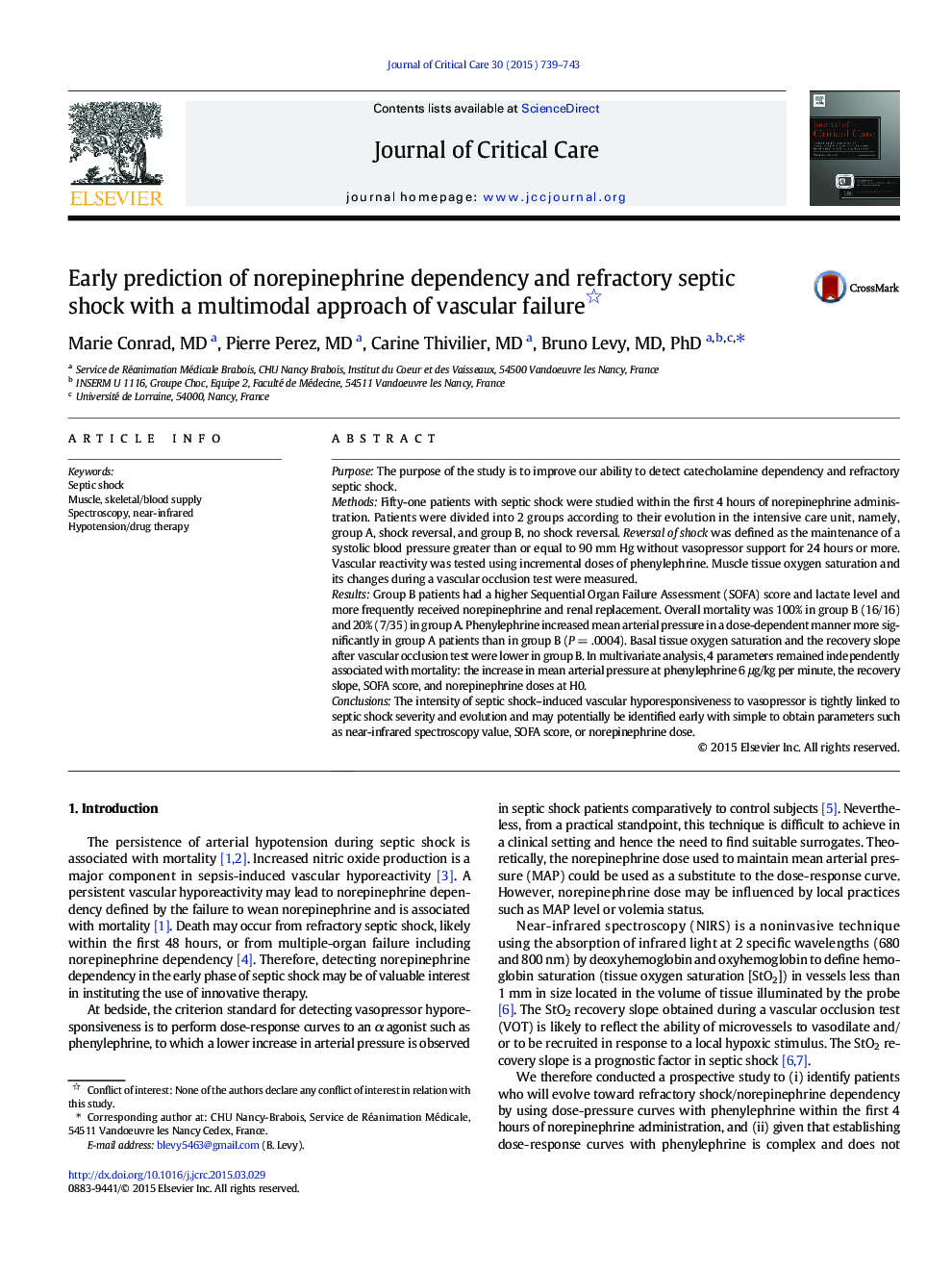| Article ID | Journal | Published Year | Pages | File Type |
|---|---|---|---|---|
| 2764525 | Journal of Critical Care | 2015 | 5 Pages |
PurposeThe purpose of the study is to improve our ability to detect catecholamine dependency and refractory septic shock.MethodsFifty-one patients with septic shock were studied within the first 4 hours of norepinephrine administration. Patients were divided into 2 groups according to their evolution in the intensive care unit, namely, group A, shock reversal, and group B, no shock reversal. Reversal of shock was defined as the maintenance of a systolic blood pressure greater than or equal to 90 mm Hg without vasopressor support for 24 hours or more. Vascular reactivity was tested using incremental doses of phenylephrine. Muscle tissue oxygen saturation and its changes during a vascular occlusion test were measured.ResultsGroup B patients had a higher Sequential Organ Failure Assessment (SOFA) score and lactate level and more frequently received norepinephrine and renal replacement. Overall mortality was 100% in group B (16/16) and 20% (7/35) in group A. Phenylephrine increased mean arterial pressure in a dose-dependent manner more significantly in group A patients than in group B (P = .0004). Basal tissue oxygen saturation and the recovery slope after vascular occlusion test were lower in group B. In multivariate analysis, 4 parameters remained independently associated with mortality: the increase in mean arterial pressure at phenylephrine 6 μg/kg per minute, the recovery slope, SOFA score, and norepinephrine doses at H0.ConclusionsThe intensity of septic shock–induced vascular hyporesponsiveness to vasopressor is tightly linked to septic shock severity and evolution and may potentially be identified early with simple to obtain parameters such as near-infrared spectroscopy value, SOFA score, or norepinephrine dose.
